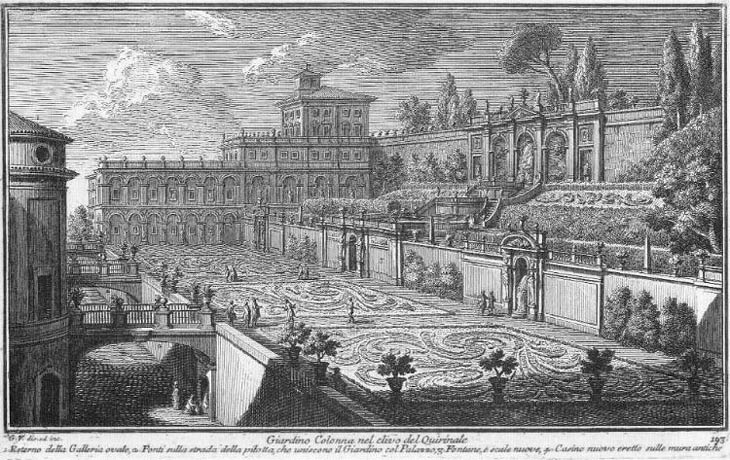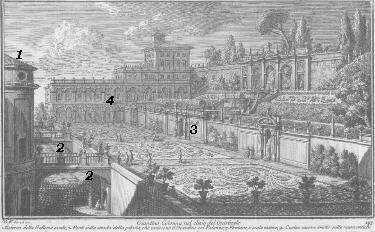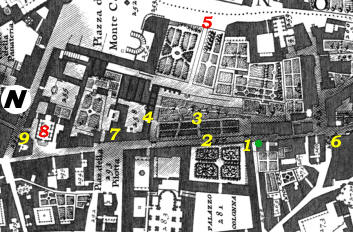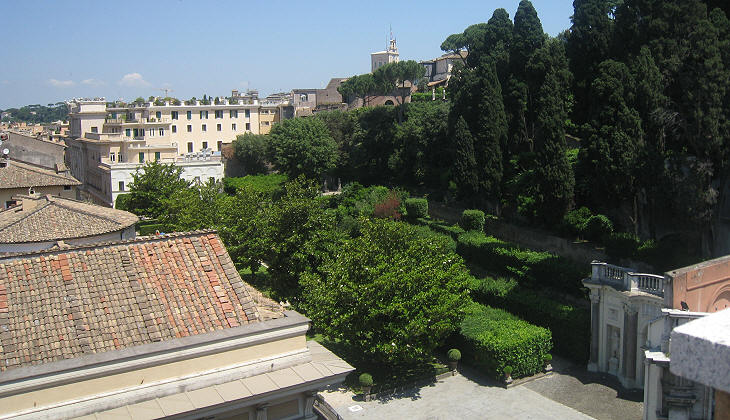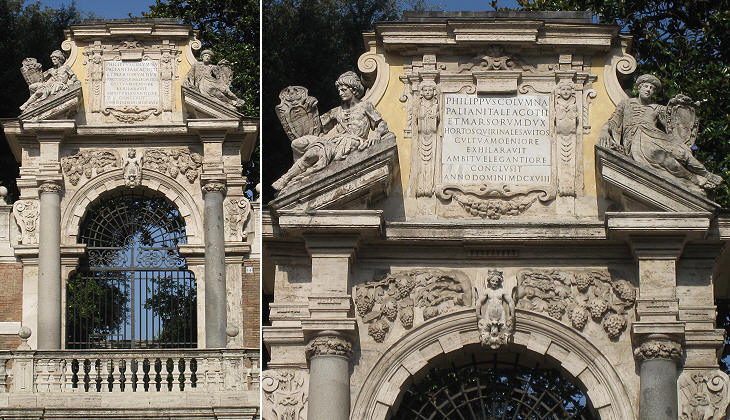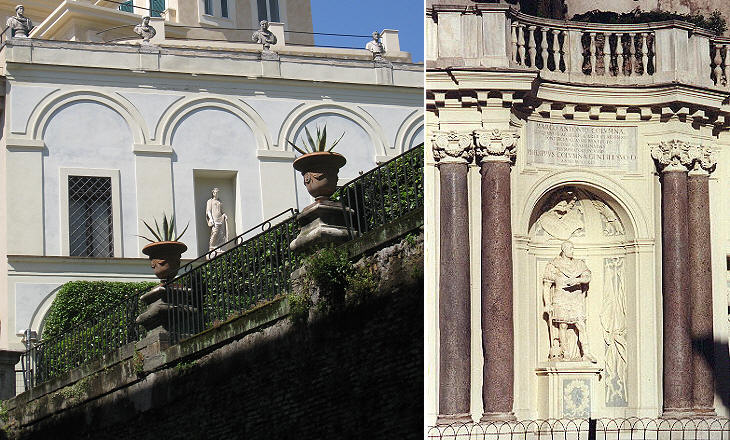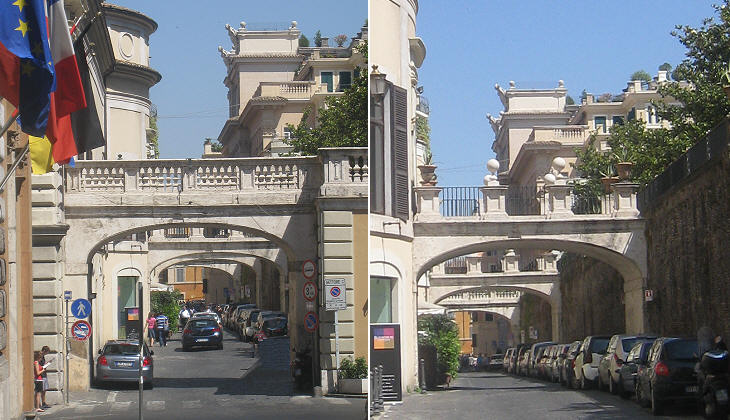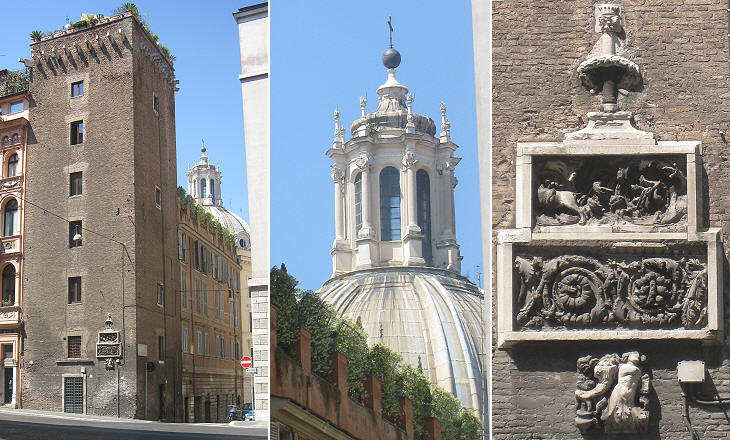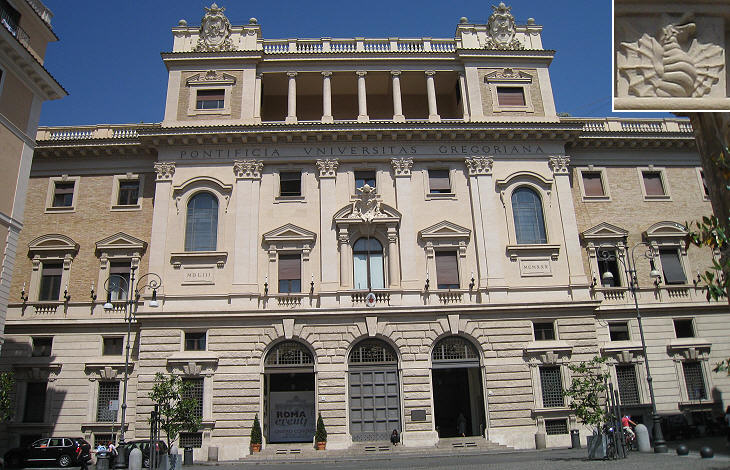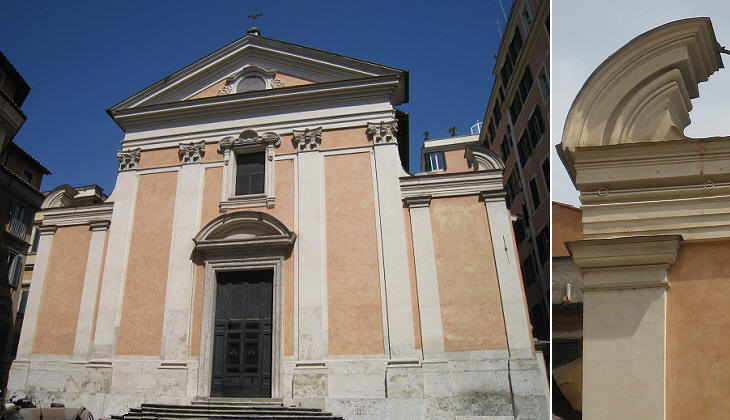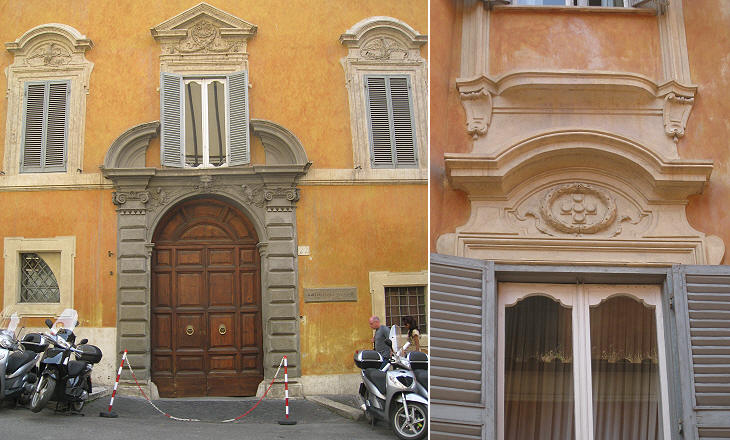  What's New! Detailed Sitemap All images © by Roberto Piperno, owner of the domain. Write to romapip@quipo.it. Text edited by Rosamie Moore. Page revised in August 2010. |  Giardino Colonna nel clivo del Quirinale (Book 10) (Map B3) (Day 3) (View C7) (Rione Trevi) In this page:
Giuseppe Vasi relied on the courtesy of a neighbour in order to engrave this view of the very secluded gardens the Colonna had behind their palace. They were arranged in a series of terraces in the western slope of the Quirinale hill and four small bridges linked them with the palace; the structures supporting the terraces were in part those of a Temple to Serapis built by Emperor Caracalla; the ruins of the temple were pulled down in 1630 when the design of the gardens was completed.
Similar to during Vasi's time, the courtesy of a neighbour is necessary to have a comprehensive view of today's gardens; flower-beds have been replaced by trees and in 1927 the new casino was pulled down for the construction of Pontificia UniversitÓ Gregoriana; the high terrace from which the photograph was taken allowed views over the loggia of Palazzo del Quirinale and (in the right lower corner) over the niche housing a statue of Marcantonio II Colonna, the family hero.
The gardens were designed at the initiative of Filippo I Colonna, Duke of Paliano and they had a grand entrance in the side opposite to the family palace. The portal was completed in 1618 and it was decorated with references to one of the family's heraldic symbols (a crowned mermaid) and to the large vineyards the Colonna had near Marino, a town where every year the victory of Marcantonio II Colonna at Lepanto is celebrated with a historical procession.
In 1713, almost a century after the completion of the gardens, Filippo II Colonna celebrated Marcantonio with a statue where his ancestor is portrayed as a Roman emperor. In the late XIXth century the Colonna sold a portion of their gardens which bordered on those of the convent of S. Silvestro al Quirinale, but they still retain the major part of the original property.
Via della Pilotta cannot be ranked among the silent streets of Rome because too many cars use it to reach Via della Dataria or to park along it. Yet it is a cosy street which is crossed by four small bridges; the first two were entirely built with travertine, while the central ones were added between 1756 and 1760 and their balustrades are lighter; the image used as background for this page shows a crowned column, the heraldic symbol of the Colonna, which is visible in Via della Pilotta.
The Colonna lived in this area from the XIIth century onward and they built several towers to protect their houses.
Torre Mesa, a lean and tall tower, was located at the side of the ruins of the Temple to Serapis; it was shortened at the request of Pope Gregory XIII, as
it spoiled the view over Rome from the summer residence the pope was building on the hill (which later on became Palazzo del Quirinale). The only remaining tower of the Colonna's medieval defence system can be
seen along Via Quattro Novembre, a modern street. It is decorated with the family heraldic symbols and with some ancient reliefs.
Pontificia UniversitÓ Gregoriana
Via della Pilotta leads to Piazza della Pilotta, where the Romans used to play ball games. The eastern side of the square was closed by Palazzo Muti Papazzurri, while opposite to it stood the new casino of the Colonna (although the 1781 Map of Rome designates it as Palazzo Piombino). The building was pulled down in 1927 to make room for Pontificia UniversitÓ Gregoriana; the university is dedicated to Pope Gregory XIII, the founder of Collegio Romano. The (patchy) fašade of the new palace was designed by Giulio Barluzzi. S. Croce e Bonaventura dei Lucchesi
A church existed on this site as early as the IVth century; it was replaced by a larger church which is recorded as S. Nicola de Portiis; in 1575 it was incorporated into a new church dedicated to St. Bonaventura which was part of a Capuchin convent; in 1631 Pope Urban VIII relocated the Capuchins to a new convent and assigned the church to the citizens of Lucca living in Rome; the fašade was redesigned towards the end of the XVIIth century by Mattia de' Rossi (click here for a list of national churches in Rome). The church was also dedicated to the Holy Cross, which in Lucca is the object of a special veneration and of a famous night procession - external link.
The small square in front of the church is closed by
an elegant small building having the entrance in Via della Dataria; it was designed in 1718 by Filippo Barigioni for the Testa Piccolomini; they were not direct descendants of the Piccolomini, a family from Siena known for Pope Pius II and Pope Pius III, but one of their ancestors was allowed by the Piccolomini to add their surname to his own.
Next plate in Book 10: Disegno dell'Anticaglia nel Giardino Colonnese Next step in Day 3 itinerary: Monastero delle Vergini Next step in your tour of Rione Trevi: Palazzo Colonna |
